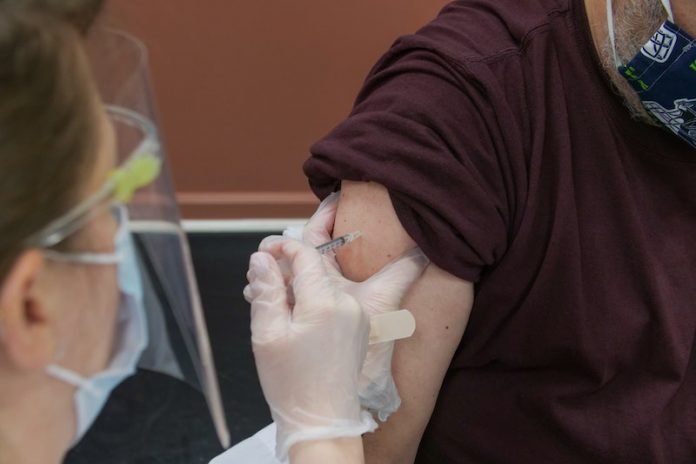
President Biden promised 100 million vaccinations in his first hundred days in office and, with increasing supply of vaccine, was able to meet that goal in less than half the time.
However, thousands of people still are struggling to get a vaccine despite being eligible, leaving many frustrated and angry.
The reasons behind the worldwide vaccine shortage are numerous, including limitations on raw ingredients and manufacturing capacity to shifting priority groups and allocation strategies.
When there is enough vaccine to go around, who gets what first will be less important, says Susan Goold, M.D., a bioethicist and professor of internal medicine who studies the allocation of scarce resources and pandemic preparedness.
Until then, “There is a lot of attention being paid to vaccine hesitancy and not nearly enough to access.”
When the CDC’s Advisory Committee on Immunization Practices met in December 2020 to recommend which groups should receive the vaccine first, a process called prioritization, committee members had the tough challenge of balancing individual risk and community risk.
“In pandemic planning, healthcare providers are almost always prioritized first because we need them to take care of patients with the disease,” says Goold.
She adds that the decision to vaccinate elderly residents in long term care facilities also made sense due to their high risk of death from COVID-19. After that, she says, “the priorities kind of fell apart.”
Like Podcasts? Add the Michigan Medicine News Break on iTunes, Google Podcast or anywhere you listen to podcasts.
For example, setting an age cut-off of 75 as originally suggested “actually discriminates against populations who have a lower life expectancy,” notes Goold.
Many states pivoted to address this discrepancy, lowering that age cut-off to 65 for the next eligible group.
This was especially important as Black, Latino and Native Americans were hospitalized or died from COVID-19 at a rate two to three times that of Whites.
However, notes Goold, race is not increasing COVID-19 risk by itself and needs to be combined with social factors to determine prioritization.
“By using exposure, health conditions and other social factors to determine priority status, you will vaccinate more people of color,” she says.
Yet, the CDC reports that of states with available vaccination data, nearly two-thirds of those receiving the COVID vaccine so far have been White.
To improve the equity of vaccine allocation, Michigan and other states more recently began using the CDC’s Social Vulnerability Index, or SVI, a tool that combines socioeconomic status, race and ethnicity, housing, English-language proficiency and other measures to identify those at most risk in the event of a public health emergency to help determine emergency response, in this case where vaccine doses should be sent.
In January, Renuka Tipirneni, M.D., M.Sc., assistant professor of internal medicine and her colleagues published a paper in JAMA Network Open that compared SVI data at the county level with health outcomes from COVID-19.
They found that areas with high SVI―or high rates of social risk factors―faced the highest burden from the pandemic, with more COVID-19 cases and deaths.
“With an infectious disease, our safety is influenced by each other in a way that is different than other natural disasters,” says Tipirneni.
“As a clinician, I want all my patients to get the vaccine as quickly as possible. When I think about it from a public health perspective, I think about how are we going to protect everyone as quickly as possible.
When supply is low, we have to think carefully about how we get the most bang for our buck for everybody out of the supply that we have.”
Getting in line for the COVID vaccine
More recently, states have been opting to more quickly expand who is eligible for vaccination, with some places enabling anyone age 16 and older to be vaccinated, despite there not being enough supply to go around.
People who are eager to get a vaccine are taking to social media vaccine hunters or driving great distances to get an appointment.
“While no system will ever be perfect, you should act on the principle that those most at risk should be given priority over those less at risk,” says Goold.
But, she says, we should cut people some slack. “If there are extra doses that will go to waste, it’s ok to go ahead and take it.”
Improving equity in vaccination means making it easier for those with less access to get shots, says Goold, through measures like mobile or pop-up clinics with expanded hours closer to where people live and work.
Tipirneni also hopes the national allocation plan will eventually expand to include frontline primary care physicians.
“My patients ask me all the time, ‘are you going to give it to me, because I trust you with a vaccine you recommend as my doctor.’”
Allowing people to receive the vaccine from people or institutions they know and trust would potentially help expand access to those with significant barriers and to those who may be on the fence, she adds.
She also acknowledges the anxiety brought about by the pandemic and the promise of apparent freedom posed by the vaccine.
“I remember feeling extremely jealous seeing my healthcare colleagues’ social media posts of themselves getting vaccinated even though I was happy for them,” she says.
“I understand feeling that now that there are vaccines, I want it as soon as possible to protect myself and my family. We’re trying to do our best to protect as many people as quickly as possible.”
Written by Kelly Malcom.



